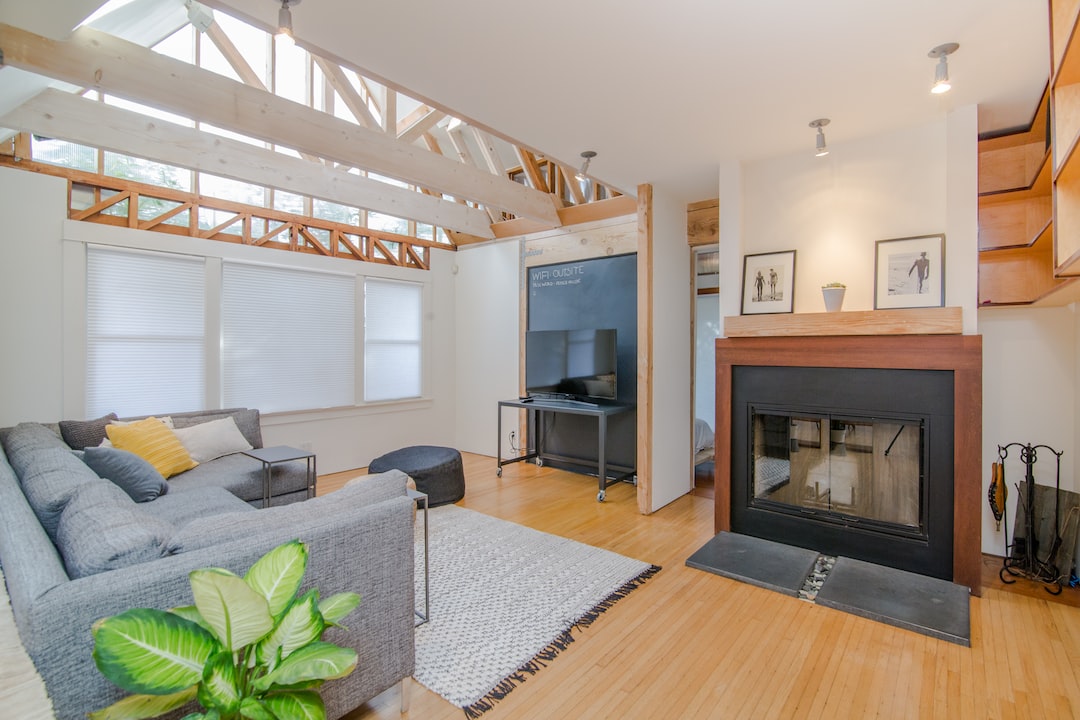Home Improvement and Seinfeld are two iconic television shows that have left a lasting impact on popular culture. While they may seem like an unlikely pair to compare, both shows have a common thread that ties them together – comedy. Home Improvement, which aired from 1991 to 1999, is a sitcom that follows the life of Tim “The Toolman” Taylor, a bumbling TV show host who constantly finds himself in comedic situations. Seinfeld, on the other hand, aired from 1989 to 1998 and is often referred to as a “show about nothing,” focusing on the lives of four friends living in New York City. Despite their differences in premise and setting, both shows have become beloved classics and continue to be enjoyed by audiences today.
The Role of Humor in Home Improvement and Seinfeld
Humor plays a vital role in both Home Improvement and Seinfeld, serving as the driving force behind the shows’ popularity. In Home Improvement, humor is used to highlight the comedic mishaps and misunderstandings that occur in Tim Taylor’s life. From his failed attempts at home improvement projects to his constant clashes with his neighbor Wilson, the show relies on physical comedy, wordplay, and situational humor to keep audiences entertained.
Seinfeld, on the other hand, takes a different approach to humor. The show is known for its dry wit and observational humor, often finding comedy in the mundane aspects of everyday life. The characters’ conversations about trivial matters such as waiting in line or ordering food at a restaurant are transformed into hilarious moments that resonate with viewers. The humor in Seinfeld is often subtle and relies on clever writing and delivery to elicit laughter.
DIY vs Sitcom: The Importance of Timing and Delivery
Both Home Improvement and Seinfeld understand the importance of timing and delivery when it comes to comedy. In Home Improvement, the physical comedy is often timed to perfection, with Tim Taylor’s mishaps and accidents occurring at just the right moment to maximize comedic effect. The show also relies on the delivery of punchlines and one-liners to generate laughter, with Tim’s exaggerated reactions and catchphrases becoming iconic elements of the show.
Seinfeld, on the other hand, focuses on the timing and delivery of its dialogue. The show’s writers carefully craft each line to ensure that it is delivered with the perfect comedic timing. The characters’ deadpan delivery and quick-witted responses contribute to the show’s unique brand of humor. Whether it’s Jerry’s sarcastic remarks or George’s neurotic rants, the timing and delivery of the dialogue in Seinfeld are crucial in creating comedic moments that have become legendary.
The Characters of Home Improvement and Seinfeld: A Comparison
The characters in both Home Improvement and Seinfeld play a significant role in contributing to the humor and overall story of each show. In Home Improvement, Tim Taylor is the lovable yet clueless protagonist who constantly finds himself in hilarious situations. His over-the-top personality and constant need to prove his masculinity provide endless comedic material. Tim’s interactions with his wife Jill, played by Patricia Richardson, and his three sons also add depth to the show’s humor, as their contrasting personalities often clash in humorous ways.
Seinfeld, on the other hand, features a cast of characters who are known for their quirks and idiosyncrasies. Jerry Seinfeld, played by Jerry Seinfeld himself, is a stand-up comedian who serves as the anchor of the show. His friends George Costanza (Jason Alexander), Elaine Benes (Julia Louis-Dreyfus), and Cosmo Kramer (Michael Richards) each bring their own unique comedic elements to the show. George’s neuroticism, Elaine’s bluntness, and Kramer’s eccentricity all contribute to the humor and dynamics of the group.
The Use of Physical Comedy in Home Improvement and Seinfeld
While both Home Improvement and Seinfeld rely on humor derived from dialogue and wordplay, they also incorporate physical comedy into their respective shows. In Home Improvement, Tim Taylor’s constant mishaps and accidents provide ample opportunities for physical comedy. Whether it’s falling off a ladder or getting tangled up in power tools, Tim’s physicality adds an extra layer of humor to the show. The exaggerated reactions and facial expressions of the characters also contribute to the physical comedy in Home Improvement.
Seinfeld, on the other hand, uses physical comedy in a more subtle way. While the show is primarily driven by dialogue, there are moments when physicality is used to enhance the humor. Kramer’s iconic entrances into Jerry’s apartment, for example, often involve him bursting through the door with exaggerated movements and gestures. These physical moments add an element of surprise and absurdity to the show, further contributing to its comedic appeal.
The Importance of Set Design in Home Improvement and Seinfeld
Set design plays a crucial role in creating the overall feel and atmosphere of both Home Improvement and Seinfeld. In Home Improvement, the set is designed to resemble a typical suburban home, complete with a garage workshop where Tim Taylor spends much of his time. The set is filled with tools, gadgets, and props that reflect Tim’s passion for home improvement. This attention to detail helps to immerse viewers in the world of the show and adds authenticity to the comedic situations that unfold.
Seinfeld, on the other hand, features a minimalist set design that reflects the show’s focus on everyday life. Jerry’s apartment serves as a central location for many of the show’s scenes, with its simple furnishings and lack of clutter reflecting Jerry’s laid-back personality. The set design in Seinfeld is intentionally understated, allowing the characters and their interactions to take center stage. This minimalist approach adds to the show’s comedic appeal by emphasizing the mundane aspects of everyday life.
The Role of Relationships in Home Improvement and Seinfeld
The relationships between characters are an important aspect of both Home Improvement and Seinfeld, contributing to the humor and overall storylines of each show. In Home Improvement, the dynamic between Tim and his wife Jill is a constant source of comedic conflict. Tim’s over-the-top personality often clashes with Jill’s more practical and level-headed approach, leading to humorous misunderstandings and disagreements. The relationships between Tim and his three sons also provide opportunities for comedic moments, as their contrasting personalities often lead to humorous interactions.
In Seinfeld, the relationships between the four main characters are central to the show’s humor. Jerry’s friendship with George, Elaine, and Kramer is characterized by their constant banter and witty exchanges. Their interactions often revolve around trivial matters and everyday situations, but it is through these relationships that the humor of the show is brought to life. Whether it’s George’s constant failures in his romantic relationships or Elaine’s quirky dating experiences, the relationships in Seinfeld provide endless comedic material.
The Impact of Home Improvement and Seinfeld on Pop Culture
Both Home Improvement and Seinfeld have had a significant impact on popular culture, influencing future TV shows and becoming a part of everyday conversations. Home Improvement popularized the DIY (do-it-yourself) trend, inspiring viewers to take on home improvement projects of their own. The catchphrases from the show, such as Tim’s “More power!” and Wilson’s wise advice over the backyard fence, have become ingrained in popular culture.
Seinfeld, on the other hand, introduced a new style of sitcom that focused on everyday life and trivial matters. The show’s unique brand of humor has influenced countless TV shows that followed, with its observational comedy becoming a staple in the genre. Seinfeld also introduced catchphrases and references that have become part of everyday language, such as “yada yada yada” and “no soup for you!”
The Legacy of Home Improvement and Seinfeld: Lessons Learned
Both Home Improvement and Seinfeld have left a lasting legacy, teaching valuable lessons about comedy and storytelling. Home Improvement taught us the importance of physical comedy and timing, showing that even the simplest mishaps can be turned into comedic gold with the right delivery. The show also emphasized the importance of family and relationships, reminding us that laughter can be found in even the most chaotic moments.
Seinfeld, on the other hand, taught us that comedy can be found in the most mundane aspects of life. The show’s focus on everyday situations and trivial matters showed us that humor is all around us if we take the time to observe and appreciate it. Seinfeld also taught us the importance of strong characters and relationships, showing that a well-developed cast can elevate a sitcom to new heights.
The Enduring Appeal of Comedy and DIY in Popular Culture
In conclusion, Home Improvement and Seinfeld may seem like an unlikely pair to compare, but both shows have left a lasting impact on popular culture. Through their use of humor, timing, and delivery, both shows have entertained audiences for years and continue to be enjoyed today. The characters, set design, and relationships in both shows have contributed to their comedic appeal and have become iconic elements of each series.
Furthermore, both Home Improvement and Seinfeld have influenced future TV shows, introducing new styles of comedy and storytelling that continue to be emulated today. Their impact on pop culture is evident through the references and catchphrases that have become part of everyday language.
Ultimately, the enduring appeal of comedy and DIY in popular culture can be attributed to their ability to bring joy and laughter into our lives. Whether it’s through the physical comedy of Home Improvement or the observational humor of Seinfeld, these shows remind us of the power of laughter and the importance of finding humor in even the most ordinary moments.
If you’re torn between binge-watching Seinfeld and tackling some home improvement projects, we’ve got the perfect article for you. Check out this article on giving your bedroom an elegant makeover on a budget. It’s a great way to combine your love for home improvement with a touch of Seinfeld-inspired style. From choosing the right color scheme to adding decorative accents, this article has all the tips and tricks you need to transform your bedroom into a space worthy of Jerry and the gang. So grab your tools and get ready to create a space that’s both stylish and comfortable.





